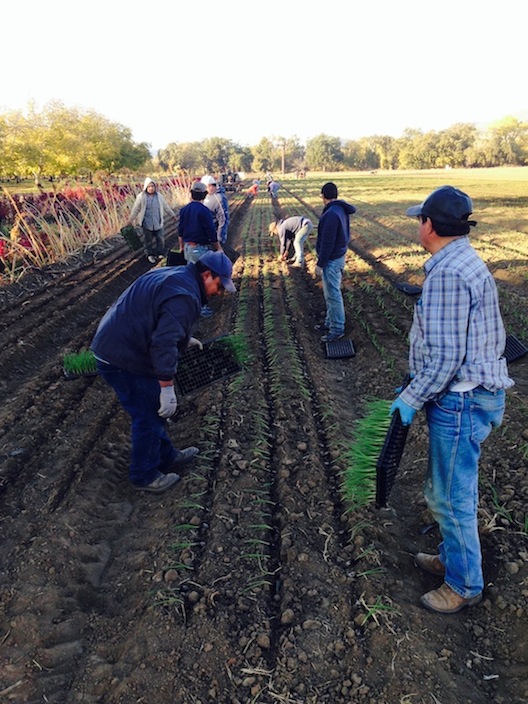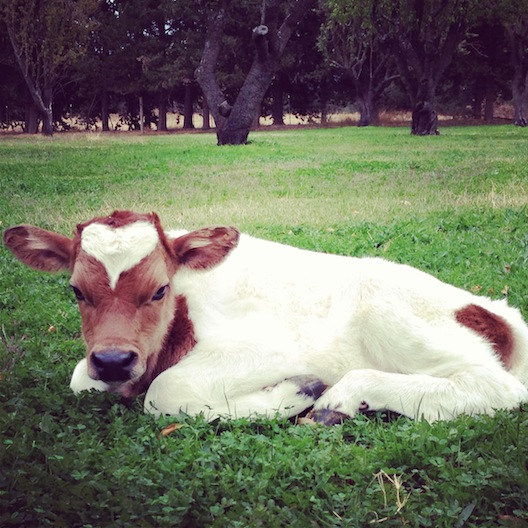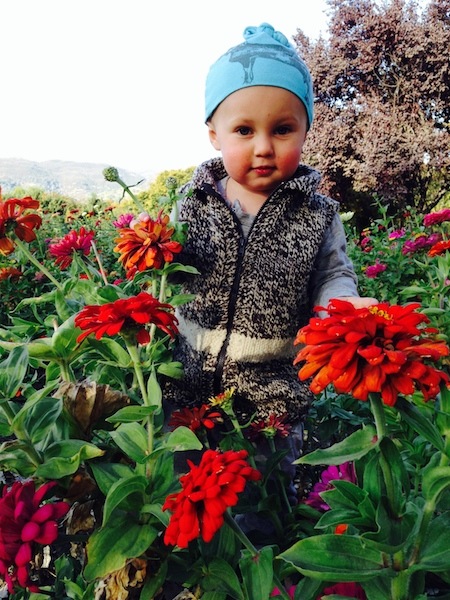Giving Thanks
The cycle of a year’s labor has come near full circle. This week we head into a day of Thanksgiving – a time for reflection about the many gifts received this year. Our labors this past year upon this generous land have yielded a remarkable bounty of beautiful and tasty crops. From the slow growing greens of last winter, when January and February were the driest and warmest on record, through Spring’s bloom- the lush pinks of the peaches and snowy whites of almond, apricot or apple –we were graced each month with abundant blessings and a progression of colors and flavors that were nothing more than marvelous.
This year was, for many farms, an exceptionally abundant and fruitful year. For the past 30 or so years, we have been planting trees and vines on the three parcels that make up Full Belly Farm, and now we are in the maturing landscape of a four-season farm. The young orchards are now moving into their peak bearing years. The fruit we enjoyed this past year reflects our work – nurturing seed, planting cuttings or rooting saplings. All were planted thinking about the harvest window we were aiming for – peaches to start in June and picked until October, figs in August, almonds in September, grapes mid-summer through the fall, and plums, pears, apples, citrus, walnuts and pomegranates to fill out the year. In this amazing environment and ecology of California, we are thankful for the generations before us who have selected, improved, delighted in flavor and helped to develop the many types of fruit we enjoy.
A relationship with each of the tree fruits is like an evolving romance- the longer together, the more secrets one grows to understand. In a farm as diverse as ours, we are thankful for the magic and generosity of a single seed – how nature allows a grain or cutting to root and multiply many times the original seed. The intimacy with each plant variety is at the heart of farm success. If you love what you grow, one is more attentive to detail and more invested in a healthy outcome. We are thankful for the bountiful gifts from our plants and trees.
Some of us are especially enamored and thankful for the incredible flowers that grace our farm. Their beauty can be striking – both in the field and in a bouquet. They are an important part of the farm business both economically and as a splash of soothing color and texture. We give thanks for the myriad expression of flower and their gentle seduction.
Our farm design allows us to take the time to observe the creatures that can inhabit a diverse ecology. We are rewarded for what we bring to market, yet our orchards and farm edges can provide flowers – pollen and nectar – in the understory of the both trees and shrubs. This mini-ecosystem supports an abundance of beneficial insects and the thanksgiving table set for their wellbeing. We see many of these beneficial creatures return each year – from ladybugs to bumblebees to bats, they can migrate from the farm as part of their lifecycle, but return to do their labor here – we are thankful for their service.
The table set in the soil may be the fundamental difference between a well-run organic farm and most farms. The turkey – main course for our soil food web – is carbon, plant matter that is dead or available for the billions of microbes that interact with soil chemistry, soil biology and plant physiology. It is an incredible potluck where each brings something to the table to share. The cranberry side, a little extra nitrogen, is brought by that attractive couple, Legume and Rhizobium. He is a bit clingy to her roots, doesn’t do much work when she isn’t around, but together they are fundamental to a great meal. We are still learning so much about this party – from the role of fungi and bacteria in soil to their ratio in differing cropping systems. As farmers we help to make the guest list as diverse and whole as possible in order to have a healthy and sumptuous feast available to them. Their wellbeing, ultimately, will determine the long-term stability of any farm. We give thanks for their willingness to return to the party, even when we unknowingly mess up their world.
There are so many others that we can be thankful for – like the sheep and cows who munch, chop, chew, reflect and inoculate our fields with healing microbial concentrate. May we not undervalue their service, and learn how to provide a place for their health and wholesomeness.
We thank our crew and their cheerful willingness to grow this farm. They are our strong shoulders, capable hands and discerning eyes that lift this farm up and carry it along.
Finally, we give our thanks to you – all of you who take the time to think that all of the above is important. We are proud to bring our food to your table, apologize for the times when it wasn’t perfect, and hope that our evolving relationship deepens and grows more delightful. On this very busy farm, we reflect upon the amazing cycle of a year, all of its lessons and look forward to doing it a bit better next year.
— Paul Muller

We transplanted over 100,000 yellow onion starts on Saturday. This seems like a crazy amount, but, if you can believe it, it isn’t even half of what we are planning to plant for next year.

Valentino, a calf born a few weeks ago at the farm, has a perfectly formed heart on his forehead. We promise he wasn’t photoshopped!

Farm baby, Rowan, has been doing lots of exploring these days. He loves tractors, dogs, and the flowers!
